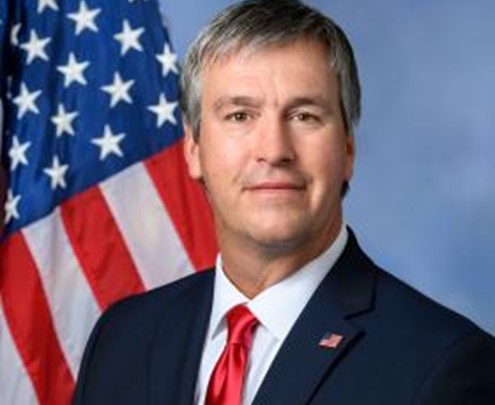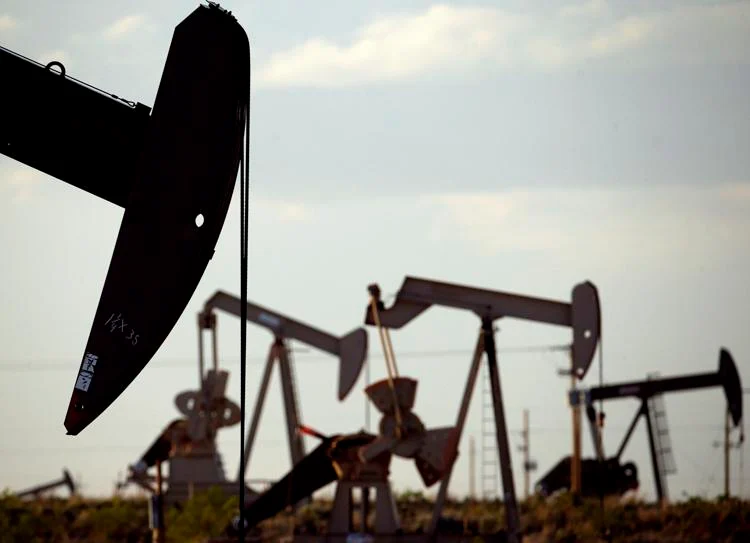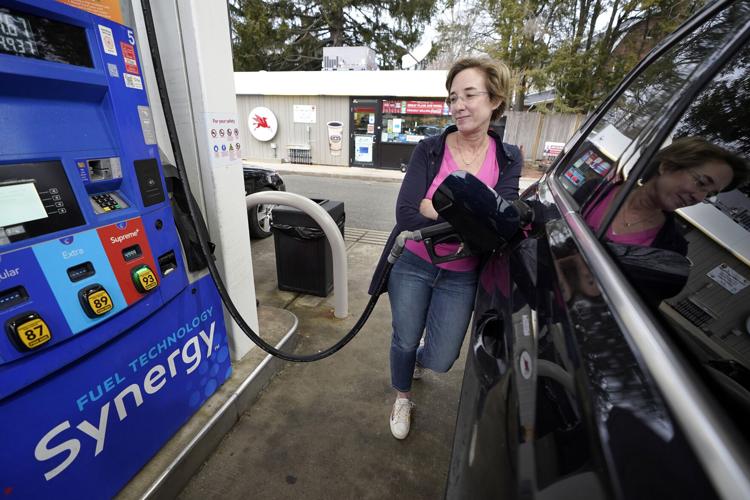Barry Moore to join colleagues at D.C. hearing on ‘Bidenflation’

Congressman Andy Biggs will hold an off-site hearing on Tuesday to discuss what he terms “Bidenflation” and “Biden’s energy crisis.” Alabama Congressman Barry Moore will attend the hearing. The hearing will be at the Heritage Foundation in Washington D.C., from 3:00-5:00 pm EDT, and will feature nearly 20 prominent House Republican lawmakers. Four expert witnesses will provide testimony. According to the Heritage Foundation website, the group’s mission is to “formulate and promote public policies based on the principles of free enterprise, limited government, individual freedom, traditional American values, and a strong national defense.” According to the press release, this hearing will “examine the Biden Administration’s policies that have led to a disastrous economic and energy state for the country.” The hearing also aims to determine how Republicans in Congress can “hold Joe Biden more accountable for his reckless leadership.” Other congressional members attending the hearing are Reps. Chip Roy, Claudia Tenney, Dan Bishop, Marjorie Taylor-Greene, Lauren Boebert, Matt Gaetz, Louie Gohmert, Doug Lamalfa, Ralph Norman, Byron Donalds, Ben Cline, Yvette Herrell, Andrew Clyde, Bob Good, and Andy Harris. Witnesses include former Governor of Texas and former Department of Energy Secretary Rick Perry, Heritage Foundation Distinguished Fellow Stephen Moore, President of Western Energy Alliance Kathleen Sgamma, and Alex Epstein, President of the Center for Industrial Progress.
Feds offering 80% less in oil and natural gas lease sales, increasing royalty rate

The U.S. Department of Interior announced it is making only 20% of eligible acreage for oil and natural gas production available for leasing on federal lands to comply with a federal court order. In his first week in office, President Joe Biden issued an executive order directing new oil and natural gas leases on public lands and waters to be halted by the Interior Department. The agency was also tasked to review existing permits for fossil fuel development. The administration was sued, and last June, a federal judge in Louisiana struck down the executive order. Issuing lease sales, the agency said, was “in compliance with an injunction from the Western District of Louisiana.” The sales would focus on the “highest and best use of America’s public lands, reflecting an 80 percent reduction from nominated acreage” and “reflects the balanced approach to energy development and management of our nation’s public lands,” the agency said in a news release. On Friday, the Bureau of Land Management posted notices for significantly reformed onshore lease sales that address “deficiencies in the federal oil and gas leasing program.” “While we’re glad to see BLM is finally going to announce a sale, the extreme reduction of acreage by 80%, after a year and a quarter without a single sale, is unwarranted and does nothing to show that the administration takes high energy prices seriously,” Western Energy Alliance President Kathleen Sgamma said. The group, which represents 200 member companies engaged in oil and natural gas exploration and production in the West, sued the Biden administration last year for violating federal law by halting lease sales. On Monday, the BLM issued final environmental assessments and sale notices for the upcoming oil and gas lease sales. It also increased the royalty rate to 18.75% to “ensure fair return for the American taxpayer and on par with rates charged by states and private landowners.” House Committee on Natural Resources Chair, Rep. Raúl M. Grijalva, D-Ariz., said increasing the royalty rate was a good move. “If we’re going to let the fossil fuel industry pocket more of our public lands for drilling, we should at least make sure they’re paying a decent price to do it,” he said in a statement. But there’s nothing fair about this for the taxpayer, others argue. The policy will only further depress American production, keep gasoline prices high, and hurt independent oil and gas producers and small businesses like those represented by Western Energy Alliance. Small mom and pop companies in the West have been hit hard by the Biden administration’s energy policies, and taxing them after halting lease sales for over a year only adds insult to injury, Sen. John Barrasso, R-Wyo., said. The agency’s argument is also flawed because producing on federal lands already costs more than producing on nonfederal lands, critics of the policy argue. “Raising the royalty rate 50 percent increases the costs of production on federal lands, which already carry a higher cost than nonfederal lands,” Sgamma said. “This increased tax will have the effect of any other tax increase – you get less of what’s taxed, in this case, federal oil and natural gas. At a time when the administration should be increasing production, it continues to introduce new policies that further depress American production and keep gasoline prices high.” Power The Future Communications Director Larry Behrens said the announcement was a political ploy to “escape blame for soaring gas prices. When these policy peanuts offered by Washington don’t turn around massive gas prices or 40-year high inflation, the President will again try to blame energy workers for not producing enough. You don’t reclaim American energy independence by giving only 20 percent and America’s struggling families will continue to pay the price for Biden’s latest political stunt.” The eligible acreage assessed by the BLM was in Alabama, Colorado, Montana, Nevada, New Mexico, North Dakota, Oklahoma, Utah, and Wyoming, according to the Department of Interior’s announcement. It analyzed 646 parcels on roughly 733,000 acres previously nominated for leasing by energy companies. The final sale notices only offer approximately 173 parcels on roughly 144,000 acres, an 80 percent reduction from the acreage originally nominated. Those being offered were already fully analyzed by the BLM at the end of the Trump administration. Numerous environmental groups have criticized the decision, also pointing out that Biden pledged to halt oil and gas production on federal lands. “Candidate Biden promised to end new oil and gas leasing on public lands, but President Biden is prioritizing oil executive profits over future generations,” Nicole Ghio, with Friends of the Earth, said in a statement. At a town hall in New Hampshire in 2020, Biden famously said, “no more drilling on federal lands, period. Period, period, period.” The White House has said it intends to fight the litigation in court and remains “committed to addressing the climate crisis.” Republished with the permission of The Center Square.
National gasoline average tops $4 a gallon, expected to continue to rise

The average price for regular gasoline topped $4 a gallon Monday, the first time motorists paid so much at the pump since 2008. Analysts predict gas prices will continue their climb, and crude oil could hit $200 a barrel. The national average for regular gasoline was $4.065 a gallon Monday compared to the $3.610 average a week ago, $3.44 average a month ago, and $2.768 average a year ago, AAA reports. California continues to have the highest average price of $5.34 a gallon. The ten states that saw the largest weekly increases are Rhode Island (+58 cents), Nevada (+57 cents), Connecticut (+56 cents), Kentucky (+56 cents), Alabama (+56 cents), West Virginia (+55 cents), Virginia (+55 cents), Massachusetts (+54 cents), New Hampshire (+52 cents) and New Jersey (+52 cents), AAA reports. The ten most expensive markets in the U.S. are California ($5.34), Hawaii ($4.69), Nevada ($4.59), Oregon ($4.51), Washington ($4.44), Alaska ($4.39), Illinois ($4.30), Connecticut ($4.28), New York ($4.26) and Pennsylvania ($4.23). “The all-time high for the national average retail price of gasoline was $4.114 set July 17, 2008,” Andrew Lipow of Houston-based Lipow Oil Associates LLC told The Center Square in an email. “And we will break that record Tuesday as the national average heads to $4.50.” The all-time high for the national average retail price of diesel was $4.845 on July 17, 2008. “We will break that record in the next few days as the national average heads to $4.90,” Lipow added. Gas prices at the pump, and all costs impacted by gasoline prices, will continue to rise as the Biden administration continues to restrict U.S. domestic oil production, analysts say, and expands reliance on foreign production, which is greatly impacted by the Russia-Ukraine conflict. The U.S. and others are considering a ban on importing Russian crude as its invasion of Ukraine continues. The WTI Crude hit $130 a barrel Sunday night, dropping to $121 a barrel Monday morning, with Brent Crude surpassing $123 a barrel. By comparison, on Wednesday, February 23, the day before the Russian invasion of Ukraine, the WTI was $92 a barrel. “The market is pricing in a 3 million barrel per day disruption,” Lipow said. “A complete ban on Russian exports will lead to $150+ per barrel. This is happening at the same time 330,000 barrels per day has been shut in Libya by protesters and 400,000 barrels per day is offline in Iraq due to field maintenance.” Analysts at Bank of America predict that if the majority of Russian oil exports are cut off, there could be a 5 million barrel per day shortfall, causing crude to hit $200 a barrel, Reuters reported. If Russian oil supply faces continued disruption, Brent could end the year at $185 per barrel, JPMorgan analysts forecasted, according to Bloomberg News. On February 23, the national average retail price for diesel was $3.96. Today it’s $4.61, with California having the highest average of $5.69. On February 23, gasoline futures prices were $2.72 a gallon, Lipow notes, now up 96 cents a gallon today at $3.68. Diesel futures prices also skyrocketed from $2.83 a gallon to $4 a gallon, a 117 cent per gallon increase. “These increases will ultimately be passed through to the consumer in the form of higher gasoline prices, higher airline ticket prices since they use jet fuel, and all sorts of goods that are made from petroleum, as well as delivery service fees because trucks and railroads are using diesel,” Lipow said. “If one is heating their home with heating oil, those costs just went up as well.” Gas prices soared under President Joe Biden well before the Russian-Ukrainian conflict began due to a number of factors. Last October, oil prices hit a 7-year high as American oil and gas companies continued to fight the Biden administration over policies restricting production. As the economy began to reopen in 2021 and the demand for fuel increased, Biden, through executive order, halted and restricted oil and gas leases on federal lands, stopped construction of the Keystone Pipeline, and redirected U.S. policy to import more oil from the Organization of the Petroleum Exporting Countries and Russia (OPEC+) instead of bolstering American oil and gas exploration and production. Last November, Biden approved the largest release in the history of the Strategic Petroleum Reserve of 50 million barrels. He also consistently looked to OPEC+ member countries to increase production, including Russia. In January, before Russia invaded Ukraine, “tensions along the Ukrainian border have helped push crude oil prices higher almost daily,” AAA reported. “While President Biden is urging Russia and OPEC to increase production, the Interior Department is erecting roadblocks to American production,” Western Energy Alliance President Kathleen Sgamma said at the time. “Oil and natural gas from federal lands is among the most sustainably produced in the world and certainly cleaner than the oil produced in Russia. Besides the stricter environmental controls on public lands, producers agree to extra measures to protect wildlife, reduce emissions, reduce water use, and ensure stewardship of the land. “Further, the Interior Department continues to ignore diverse voices who have urged the administration to move forward with developing oil and natural gas in America,” she added. “Democratic governors, minority community leaders, tribes, small businesses, and many others have voiced support for continued federal oil and natural gas development, but the administration prioritizes activists and environmentalists over bipartisan policymakers and a broad array of stakeholders.” Still, Biden remained resolved to prioritize dependence on OPEC+ member country production and to continue to release oil from the Strategic Petroleum Reserve. Last week, he announced that 31 countries, including the U.S., were releasing 60 million barrels of oil from reserves around the world, with the U.S. releasing half. The U.S. alone requires 18 million barrels a day, Daniel Turner, founder and executive director of Power The Future, notes. Biden’s plan would only provide enough domestic supply for two days. “President Biden’s efforts aren’t going to solve any problems any time soon,” Turner said. “It’s clear the Biden


